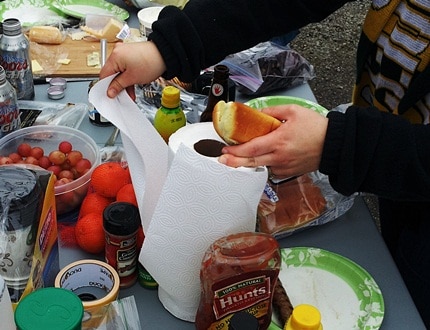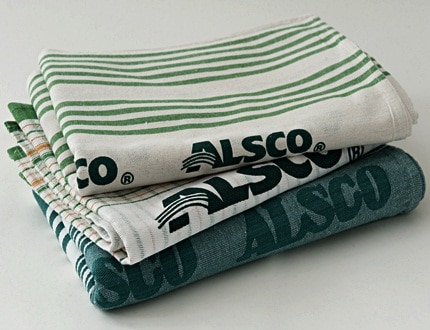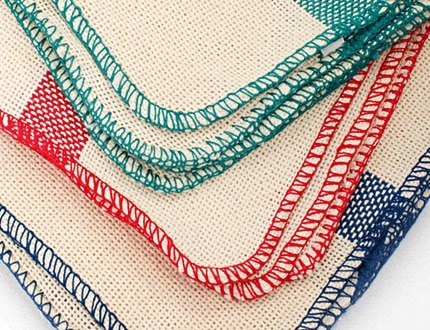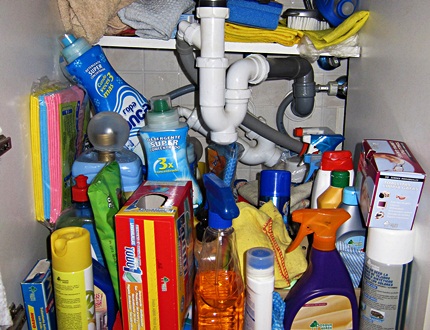Long before the advent of green cleaning practices, business operations in maintaining a clean workplace can be considered a very wasteful activity.
Fortunately, these days, it is possible
to introduce small but pivotal changes in cleaning practices in an industrial setting.
That can help promote environmental sustainability without compromising the cleaning quality.
These changes can be implemented in the macro level of power plants down to the smaller or micro-level of keeping clean kitchens in a tiny restaurant or café business. And for the latter, the switch from old school methods to reusable food wipes is one such change. It is a simple but effective solution that holds a lot of promise.
Disposable Paper Cleaner’s Downside
The ushering in of reusable products like cotton and microfiber food wipes emerged after a long-standing history of using disposable paper products to wipe off gunk or dirt from the kitchen surfaces.
The paper cleaner’s shelf life comes with an expiration date on its sterile period where it can later be more harmful to use than discard. In contrast, you can wash and reuse a micro-fibre food wipe by as many as 500 times.

Photo Courtesy of Flickr Image by jchapiewsky
Despite this downside, there are still instances where disposable paper products are practical. For example, one time events like outdoor parties leave a little provision for hoisting a whole set of cleaning products and require a mobile cleaning setup.
But for more regular operations like maintaining a café or a restaurant, long-term cleaning solutions are in order.
Nuances of Cloth Materials for Cleaning
Not all reusable food wipes are created equal. Cotton is a natural material, while microfiber is a synthetic material. The ability to absorb depends on your choice, and each type has its own set of advantages and disadvantages.
Cotton is ubiquitous as a naturally occurring fibre in the world. On the other hand, micro-fibre has a greater ability to absorb and withstand a diverse array of kitchen dirt types. Your choice will also depend on which part of the kitchen needs wiping.

For example, glassware and drying activities are best done with the use of natural cotton cloths. A more special type of cotton cloth called a cotton tea towel is popular for dish drying. Wine glasses, on the other hand, demand an expert use of damp polyester material.
In case of temperature extremes, cotton can handle hot temperatures better than polyester material.
In a normal kitchen cleaning setup, it may be advantageous to have both types at your easy disposal.
Standards and Color Coding Designations for Reusable Food Wipes
There is nothing random or disorganized about the commercial use of items like polyester or cotton food wipes. The selection of the reusable food wipes is not a whim or a fleeting trend in cleaning kitchens.
Four colours govern the use of this item in kitchens: green for raw food, blue for cooked food, pink for food establishment cleaning, and white for general purposes.

Even if the humble stature of the cotton wipes takes a small space in your cleaning arsenal, it is upheld by a global food safety standard. The colour-coding mechanism was upheld by HACCP Food Safety system. This system makes sure that there is less risk of contamination. Raw food and final prepared food need to be separated and treated differently.
This just goes to show that there are high standards at play. A simple cotton dishcloth for cleaning just would not cut it if you are really planning to impress the food establishment authorities during your restaurant’s official audit.
Strong Cleaning Ingredients Beget Strong Reusable Wipes
One of the limitations of disposable paper cleaning wipes for kitchens is the fact that they are not usually strong enough to handle chemicals that are essential for disinfecting the kitchen surfaces. Each area in the kitchen requires a specific type of chemical.

Photo Courtesy of Flickr Image by Keith Williamson
Worksurface and cooking equipment benefit from a controlled dosage of chlorine, iodine, or bleach. Some of the heavier equipment in the kitchen may be cleansed using alkali detergents. On the other hand, you can use acid for floors, walls, and ovens. The rest of the items with less specific requirements can use a traditional cleaning substance.
Busting Bacteria and Vermin through Sound Kitchen Cleaning Practices
Ultimately, it’s not enough to switch from one type of food wipe to another. The choice of your cleaning solution must be embedded under the holistic view of keeping a clean kitchen: sustaining excellent facilities for your business and fostering a habit of killing bacteria and vermin.

Photo Courtesy of Flickr Image by Trevor Owens
One of the problems with using the old style of disposable paper cleaning materials is the proliferation of bacteria. Disposable cleaning items are much harder to sterilize.
The biggest possible bane to a food-related endeavour is to have a sullied reputation due to lack of sanitation practices. It can be hard to bounce back after earning the infamy of having dirty and unsafe food preparation facilities.
Alsco proudly owns both cotton and micro-fibre fabrics in their effort of promoting environmentally sustainable cleaning solutions. To get a free trial of these well-designed reusable food wipes, you can head on over to www.alsco.co.nz.
You can also consult a friendly staff member who is knowledgeable about the products via their customer care number (1300 300 953).


